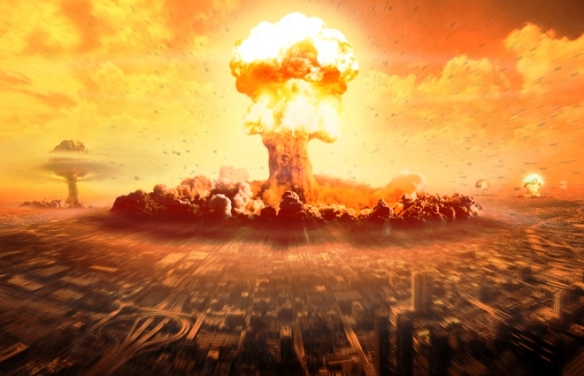Although the term “weapon of mass destruction” (WMD) has been in use for more than thirty-five years, it has no widely accepted definition. Only one international agreement uses the term: The 1967 Outer Space Treaty bans “nuclear weapons or any other kinds of weapons of mass destruction” from Earth orbit or on celestial bodies. The term “WMD” sometimes is used to identify weapons considered beyond civilized norms that should be banned or at least internationally controlled.
One working definition for WMD might be weapons that can create more than a hundred times the casualties expected from an equivalent mass of high explosive and that can cause severe contamination to an area requiring millions of dollars and months of work in cleanup and rebuilding efforts in order for safe use to resume. Most definitions of WMD list biological, chemical, radiological, or nuclear weapons. These four types of weapons can affect large areas and large numbers of people, especially in comparison with conventional weapons targeted at specific soldiers, vehicles, or buildings. In addition, all four can produce effects that spread far beyond their original target area and contaminate a large area for a long time after use.
WMD Effects
There are significant differences among the four kinds of WMD in terms of effects, difficulty of acquisition and delivery, and expectations about use. Nuclear weapons are the only type of WMD that destroy structures and equipment as well as killing people. No form of protection is effective against nuclear blast effects.
Pound for pound, biological weapons can produce even more casualties than nuclear weapons, but biological weapons are more dependent on environmental conditions and random factors. With sufficient warning, military forces can protect themselves against biological weapons; for many agents, civilian populations also can be treated after an attack is discovered. Biological agents do not usually produce instant death or even incapacitation; they often take hours or days to produce effects. Some people may even have natural immunity to a biological agent.
Chemical weapons must be delivered in vast quantities to cause massive casualties. When warned, military authorities can have troops use protective gear to reduce the number of casualties suffered during a chemical weapons attack. When not protected, however, exposed individuals may experience a nearly instant agonizing death from just drops of certain chemical agents.
Radiological weapons might produce more panic from fear of radiation than actual death. In theory, radioactive debris could be spread over a large area using conventional explosives laced with fissile material. Radiological weapons require large quantities of material to produce a delayed effect that can be defeated with protective clothing and through decontamination efforts.
Acquisition and Delivery
Nuclear weapons are probably the most difficult type of WMD to acquire because specialized equipment and knowledge is required to develop and test them. Nuclear weapons production relies on complex and unique equipment and the procurement of weapons-grade fissionable materials that must be carefully controlled. Meeting the requirements to construct nuclear weapons is a challenge for nations and may be beyond the ability of nonstate groups. Terrorist groups, however, may be able to acquire a weapon on the black market or through theft.
In contrast, biological weapons can be created using commercial equipment in a relatively small facility, and even small amounts can be deadly. They can be distributed easily, as shown in the U.S. anthrax attacks that occurred in the fall of 2001. Production of chemical weapons in quantity requires chemical engineering expertise and chemical production facilities on a scale similar to that of petroleum refineries. Aircraft sprayers and artillery delivery are preferred for battlefield use, but pressurized tanks can suffice at any scale.
Radioactive material suitable for radiological weapons is readily available given its widespread use in medical and research applications. Delivery of radiological weapons by means of aerial dusting would affect the largest possible area, but recent concern has centered on the possible terrorist employment of so-called dirty bombs, that is, conventional explosive devices used for dispersing nuclear material. Explosive dispersal is unlikely to produce any deaths from radiation but could require an expensive and time-consuming decontamination cleanup effort to make the area safe for human occupation.
Despite the potential for chemical, biological, radiological, and nuclear weapons to produce large-scale death and destruction, weapons of mass destruction have primarily served as tools of deterrence by nations attempting to prevent their use by adversaries.
References
Cordesman, Anthony H., Terrorism, Asymmetric Warfare, and Weapons of Mass Destruction (New York: Praeger, 2001).
Tucker, Jonathan, Toxic Terror: Assessing Terrorist Use of Chemical and Biological Weapons (Cambridge, MA: MIT Press, 2000).
